Your cart is currently empty!
What Happens When You Put too Much Glaze on Pottery?
Published:
Last Updated:
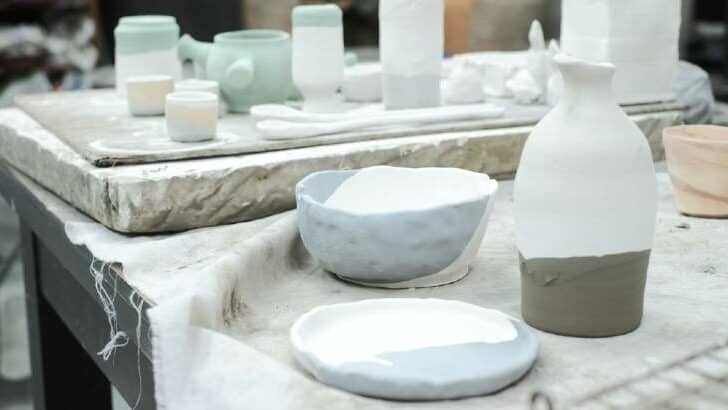
Affiliate Disclaimer
As an affiliate, we may earn a commission from qualifying purchases. We get commissions for purchases made through links on this website from Amazon and other third parties.
Applying glaze is a learning curve. It can be tricky to control exactly how much you apply. This article is about what can happen if you put too much glaze on pottery.
If you put too thick an application of glaze on pottery, several things can occur. The glaze may crack and flake off as it dries and before it’s fired. It may cause drips that run and stick to your kiln shelf. Alternatively, you may have other glaze defects such as crawling, blisters and bubbles, pinholes, crazing, and shivering.
Fortunately, these glaze defects can be addressed. Let’s take a closer look at what happens when you put too much glaze on pottery and what you can do about it.
What Can Go Wrong When You Put Too Much Glaze on Pottery?
A number of glaze defects can occur if your glaze is too thick. Here are 6 of the main offenders…
1) Glaze Running and Dripping
One of the most likely things to happen if you apply too much glaze on pottery is that the glaze will run when it’s fired.
Glazes melt when they are fired. The silica in the glaze becomes liquid when it’s hot enough and forms a molten coat on the glaze. As the pottery cools the glaze becomes solid again forming a glossy, glassy surface on the pot.
Some glazes are described as being stiff or static. These are glazes that don’t move very much when they are being fired. Other glazes are quite liquid and runny and will create drippy patterns when fired. Fluid glazes are often layered with one another to get nice drippy intermingled patterns on pottery.
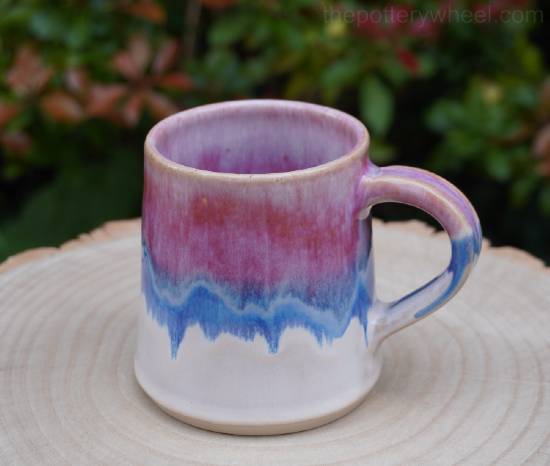
Drips and runs might be an intentional part of the glaze look that you are going for. But if your glaze runs excessively, you will probably encounter problems.
One issue is that the glaze can run down to the base of the piece and stick the pot to the kiln shelf. Or if you are firing something with a lid, the lid may get welded to the piece.
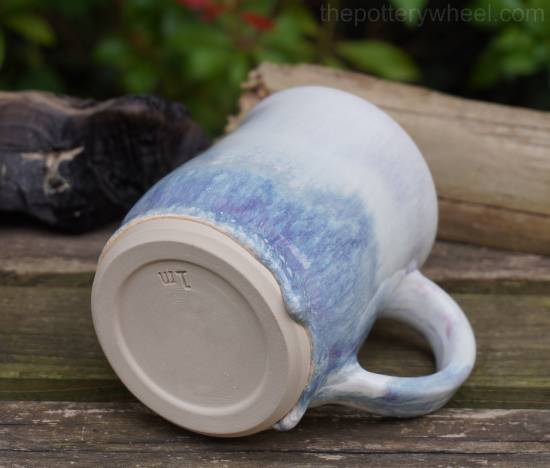
If you have put too much glaze on the inside surface of a piece, the glaze may run and pool in the base of the pot. When this happens, you can get trapped bubbles in the pooled glaze.
Factors that affect if your glaze will run:
Some glazes will run a lot even if they are not applied thickly to a piece. These glazes contain high amounts of fluxing oxides. Fluxes lower the melting point of the glass forming ingredients in glazes.
Other glazes will run if they are layered with other glazes. The combination of two glazes will alter their chemistry and cause them to become more fluid.
The other factor that will affect whether a glaze runs or not is the thickness of the application. Even a glaze that is quite static and stable can run if too much is put on the pottery.
The Solution to Running Glaze
- If you have bought a commercially made glaze, be mindful of the manufacturer’s instructions about how many layers to apply.
- When you are using a glaze for the first time, it’s a good idea to fire a test tile first. This will give you a good idea of how static it is when it’s fired.
- Always use kiln cookies, especially when using glazes that you are not familiar with. Kiln cookies are thin slabs of clay that your pot rests on in the kiln. You can read about how to make and use kiln cookies here.
- When you wipe the base of your pot before firing, make sure that you wipe a good margin when using a new glaze. If I’m using a new glaze, I tend to wipe about ¼ inch from the base of a piece.
- If you are sure that the glaze is too thick and you don’t want to chance it running, you can wash it off and start again. Just be sure to let the washed pot dry thoroughly before you reapply the glaze. If you try to glaze a bisque pot that contains lots of absorbed water, the glaze will go on too thin.
- You can also grind off drips after the pot has been fired. If you pull the pot out of the kiln and it’s stuck to the kiln cookie, you can break the pot off the cookie. Then you can use a diamond sanding block, or a Dremel tool to grind off the sharp glaze at the base.
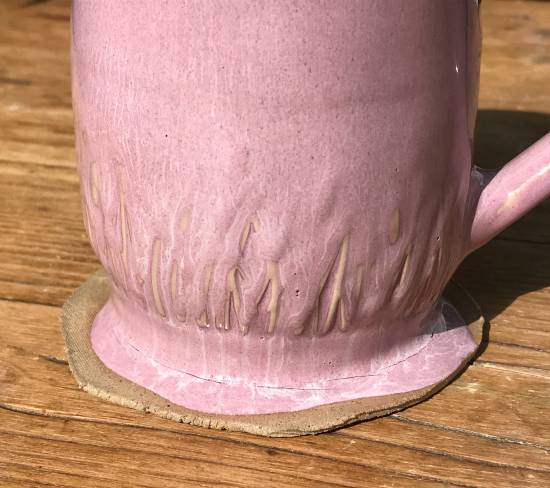
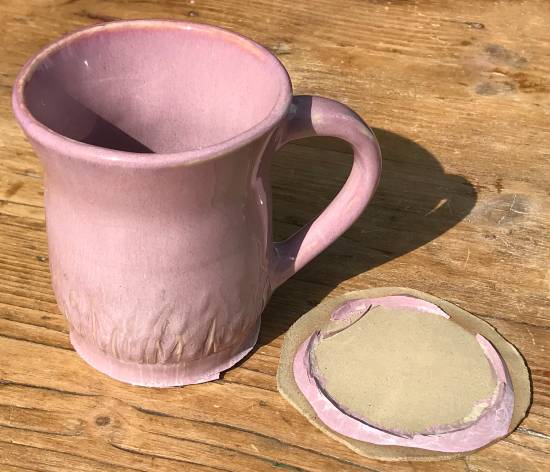
2) Cracking Or Flaking Pottery Glaze
One problem that can arise if you put too much glaze on your pottery is that the glaze might crack or flake off.
If your glaze is too thick, you might notice that it has cracked as it dries and before it’s been put in the kiln.
When you are using a fluid glaze that becomes quite molten and moves around when it’s fired, this might not be an issue. You might find that the glaze simply flows into the cracks as it’s being fired.
However, sometimes small cracks in glaze can open up during the glaze fire. When this happens the glaze creeps away from the ceramic surface, leaving a bare patch on the pottery. This is known as crawling.
Some glazes don’t crack even if they are applied in a thick layer. This is because different glazes have different ingredients. If a glaze has a high clay content, it will be prone to shrinking when it dries. As a result, you might notice the glaze has cracked when it dries.
Crawling
Crawling also happens when the glaze doesn’t bond well to the surface of the bisque. This can also be the result of too much glaze being put on the pottery. Glaze ingredients are suspended in water. When you apply glaze to the pottery surface, the water is absorbed into the porous bisqueware. As the water is drawn out of the glaze, the glaze forms a bond with the surface of the pottery.
If you apply too much glaze to the pot, the bisque can get overloaded with water. When bisque is too wet it can prevent the glaze from forming a strong bond with the surface.
Sometimes it’s obvious that this has happened, and the glaze will flake off in chunks before it’s fired. However, now and again the glaze will have a smooth-looking appearance and it will look as if it has stuck to the pot.
In reality, there is a gap between the glaze and the bisque surface. As such the glaze is hovering over the bisqueware. When it’s fired, the glaze will peel away from the patches where it has not adhered.
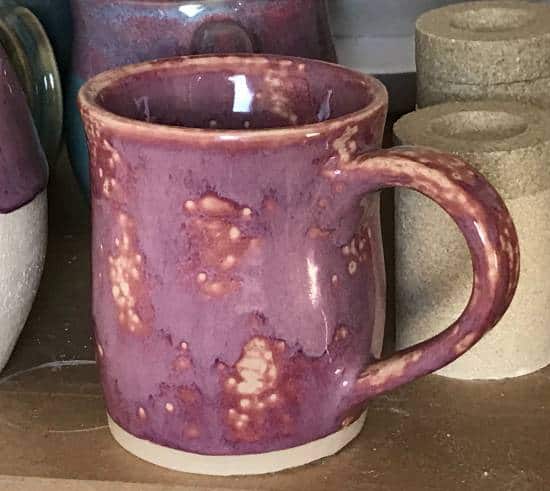
The Solution to Cracking, Flaking, and Crawling
Glaze on pottery should be about ‘postcard’ or ‘credit card’ thickness. Achieving this thickness depends on how you apply the glaze.
Dipping Glaze
If you are dipping your glaze, it’s common practice to dip the pot for around 5 seconds. However, this does depend on the glaze you are using. You might need to experiment. If you have bought the glaze rather than made it, you could reach out to the manufacturer for guidance.
Generally, it’s not necessary to dip pottery in glaze twice. If you do intend to dip twice, make sure that the dips are short. For example, two dips that are 2 seconds each. Usually dipping twice is reserved for when you are layering two glazes on top of one another.
Brushing Glaze
On the whole, it’s recommended that you apply 2 or 3 coats of brushing glaze. When you are applying the brushing glaze, be careful not to load your brush up to heavily and daub too much in corners and joints.
For example, it’s easy to pool a lot of glaze around where a handle meets a mug. This can cause some glazes to crack at the point where the glaze is thicker.
Also, wait for the first coat to dry a bit, but not until it’s absolutely dry. If the first coat is completely dry, when you apply the second coat, the moisture in the second layer can loosen the bond between the first layer and the bisque.
Equally, it’s best not to apply the second layer too soon. If the bisque still contains a lot of water from the first application, the second layer may go on too thin. It may also take a long time for the glaze to dry. This can cause the glaze to crack, and also cause a poor bond to the bisque surface.
Pouring Glaze
If you are pouring your glaze, usually a single pour will be sufficient.
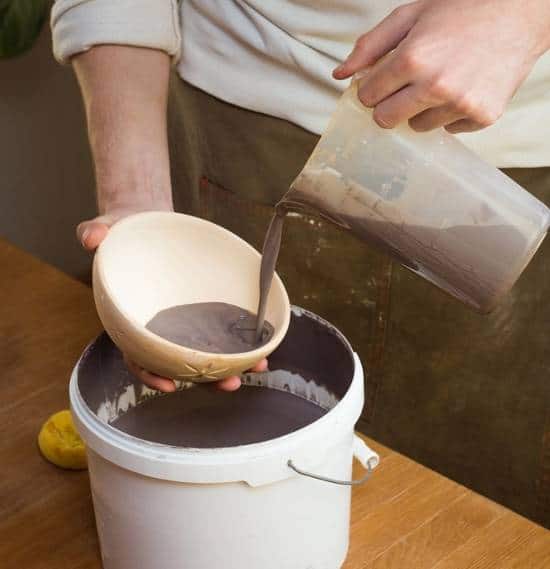
It’s worth noting that flaking and crawling can be caused by a few things, not just applying a very thick layer of glaze. You can read more about the various causes of glaze flaking and crawling here.
3) Blisters and Bubbles in Your Glaze
Using too much glaze on pottery can sometimes cause the glaze to blister during the glaze fire. This is because, during the firing process, the clay and glaze both create gases that need to be released through the surface of the glaze.
During the glaze fire, the glaze becomes molten or liquid. In an ideal world, the gases in the clay and glaze create bubbles that move to the surface of the glaze. The bubbles burst and the liquid surface of the glaze smooths over and heals after the gas has escaped.
However, if you have a very thick layer of glaze the bubbles have further to travel and can get trapped. This can cause two glaze defects.
Bubbles:
If the gas bubbles get trapped in the glaze before they reach the surface it can cause the glaze to look cloudy. This is a particular issue with transparent glaze over colored clay or underglaze.
For example, if you put a transparent glaze on red terracotta, bubbles in the glaze will look milky on the clay. You can read more about why clear glaze can go cloudy here.
Blisters:
Sometimes the gas bubbles might make it to the surface of the glaze, but then get trapped just under the surface. This can create a blister in the glaze. Sometimes these have a very thin film of glaze that breaks when the pot cools down or is handled. It’s important to handle these carefully as the blisters are often sharp.
Other times the blister will burst in the kiln but not have time to heal properly in the glaze fire. But it will leave a pockmark on the glaze surface.
The Solution to Blisters and Bubbles
Blisters in glaze can happen for a number of reasons. It may not be to do with the thickness of the coat of glaze. And sometimes, it will be a combination of factors, including glaze thickness.
If blisters and bubbles are forming on your pots, you can try applying a thinner layer of glaze. It’s also true that some glazes are more prone to blistering than others. For example, stiff glazes are more prone to blistering.
Glazes that are fluid let the bubbles escape quickly. And once the gas has escaped the moving glaze will quickly heal over and become smooth. By contrast, stiff glazes have a higher surface tension and it’s harder for the bubbles to escape.
So, if you are getting blisters, it’s worth considering other factors too. Are you bisque firing slow enough and long enough for all the gases to escape? Do you need to add a soak to the end of the glaze fire, to give the glaze time to heal itself? Or is it simply that you put too much glaze on the pottery to let the gases pass through and heal over?
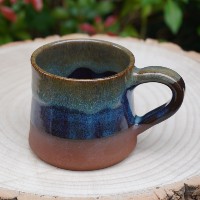
Visit The Pottery Wheel Store
Fancy treating yourself to some homemade pottery? Looking for a unique gift? Check out my handmade pottery store…
4) Pinholes and Pitting in Your Glaze
Pinholes in glaze are, as the name suggests, holes in the glaze that are usually no larger than a pinhead. The hole goes all the way from the outer surface of the glaze to the underlying clay body.
Pinholes in glaze are, as the name suggests, holes in the glaze that are usually no larger than a pinhead. The hole goes all the way from the outer surface of the glaze to the underlying clay body.
Pitting is similar to pinholing, the difference is that pits don’t extend all the way down to the surface of the clay. Pinholing can happen for a range of reasons. When it is related to the application of glaze, it normally occurs when the glaze has been applied too thinly. This is especially so when it’s applied to clay bisqueware that has a coarse texture (source).
The combination of the rough texture and gases being emitted by the clay body during firing can cause bubbles at points on the pot, which form pinholes.
However, pinholes can also form when there has been too thick an application of glaze. Pinholes in thick glaze form much like blisters. Bubbles formed in the glaze from gases being released take too long to get through the thick glaze. The bubbles burst once they reach the surface, but the glaze does not fill in the crater left behind. You can read more about the cause of pinholes here.
Pinholes differ from blisters in that they don’t have the same thin bubble of glaze over the top of the hole. And they are smaller than blisters. When pinholes start to get larger, this would be classified as crawling.
The Solution to Pinholes and Pitting
If you are experiencing pinholes, you might have to experiment and identify the cause through a process of elimination.
Glaze thickness is one possible cause. If you have eliminated other causes, and you are aware that you have put too much glaze on your pottery, then glaze application is the thing to address.
As stated earlier on, the glaze needs to be about the thickness of a credit card. It can be hard to gauge this when you are applying the glaze. Also, some glazes go on thicker than others.
The best way to figure out how many layers of glaze your pottery needs is to glaze a test tile. Scratch off the glaze with a needle tool or a clean-up tool and see how thick it looks after successive layers. You can also fire the test tile to see how the glaze looks once fired.
5) Crazing in Glaze
Another difficulty that can arise if you apply too much glaze on pottery is that the glaze might craze during firing.
Crazing is tiny hairline fractures in the glaze. You may not notice the crazing until you look at it closely. However, crazing is an issue, because it can affect the food safety of pottery. Tiny cracks in the glaze can harbor bacteria from food and drink.
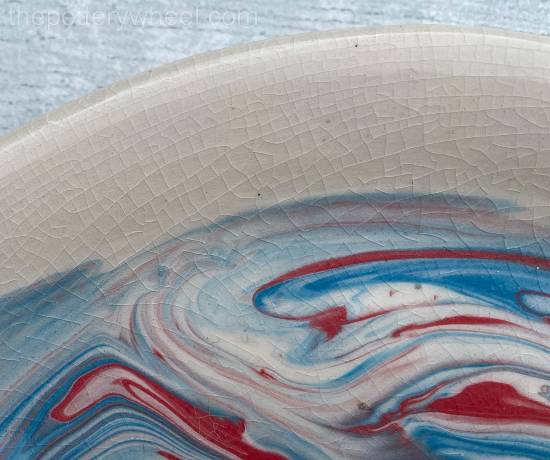
You can read all about crazing in my article here.
Why Does Glaze Craze When It’s Too Thick?
When pottery is glaze fired, both the clay and the glaze expand in the heat. As the kiln cools the pottery contracts again. In addition to this, pottery also shrinks in a glaze fire. The rate of shrinkage depends on the type of clay you are using and the temperature you are firing at.
All of this means that the clay and glaze need to expand and shrink in a way that is compatible with one another. This is known as the ‘fit’ between clay and glaze. If a glaze doesn’t fit a clay body well, you will most likely get defects during the glaze fire.
One of the reasons that crazing happens is that the glaze expands more than the clay when it’s being glaze fired. The rate at which it expands is called ‘thermal expansion’.
If the glaze has a higher rate of thermal expansion than the clay, then it will also contract more when it cools down. This causes the glaze to fracture under the strain.
When these fractures are tiny cracks across the pot, they will show up as crazing in the glaze. Thick glaze is more likely to craze because the layer is stronger and under more tension.
6) Glaze Shivering
The final glaze defect that can happen when glaze is applied to thick, is an issue called ‘shivering’. Shivering can be thought of as the opposite of crawling. It occurs when the glaze contracts less than the clay when it cools in the kiln.
When shivering occurs, it’s as if the glaze is just too big for the pot. The pot shrinks and the glaze shrinks less. This puts the bond between the glaze and the pot under tension. It also puts tension on the glaze itself as it struggles to fit the pot.
The result of the tension is that sections of the glaze can pop or peel off the pot. This can sometimes happen quite a while after the pot has been glazed.
It’s common with low-fire glazes that have been applied too thick. Part of the issue with a low-fire glaze is that the bond between the clay and the glaze is not especially strong. Low-fire glazes sit on the clay surface, rather than mingling with the clay body. This is one of the reasons they tend to chip more easily than mid and high-fire glazes.
If a low-fire glaze doesn’t shrink as much as a clay body, it will be under tension when the kiln cools. When the glaze has been applied thickly, the bond between the glaze particles will be stronger than the bond between the glaze and the pot.
As a result, that glaze will shiver off the pot, especially at points on the pot that are most under tension. This includes contours such as rims and handles.
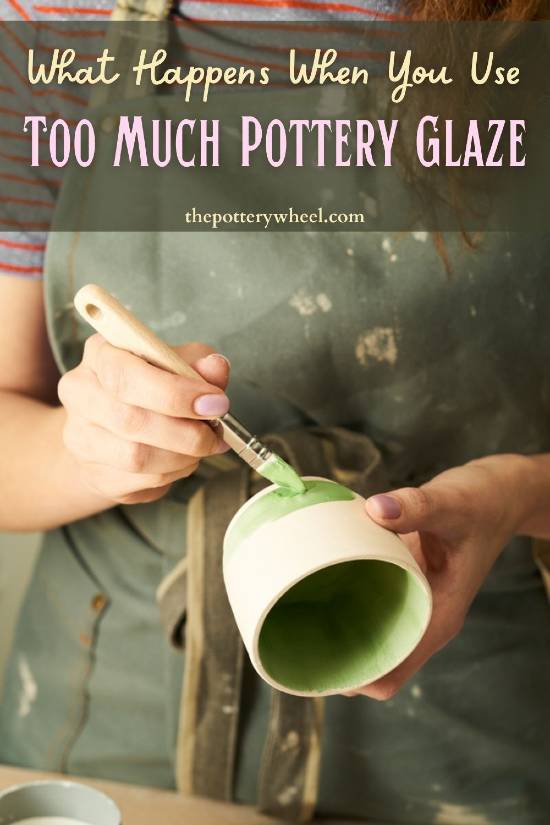
Too Much Glaze on Pottery – Final Thoughts
Several things can go wrong when you put too much glaze on pottery. If you are having an issue with your glazes, you might find that more than one factor is contributing to the problem. The good thing about glaze is that until it’s been through the kiln, you can always wash it off and start again.



